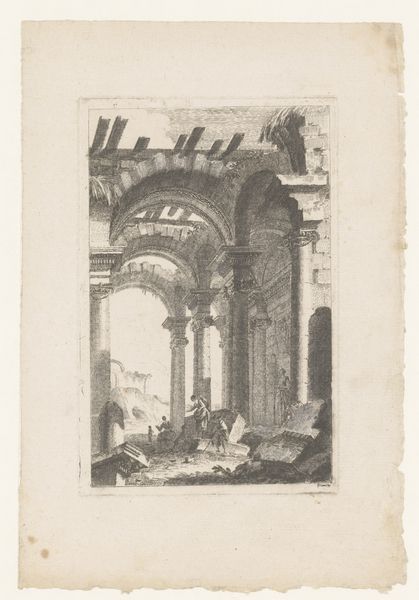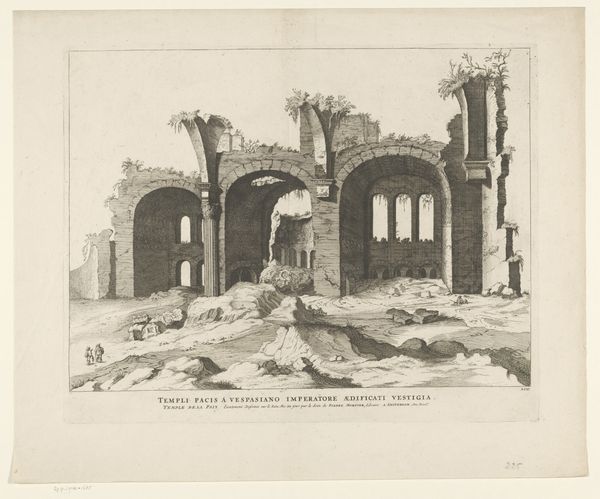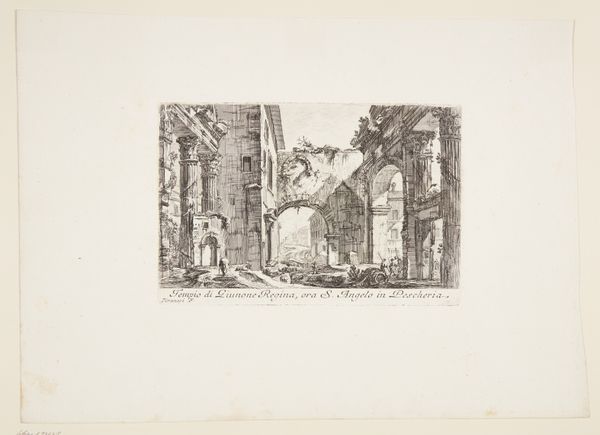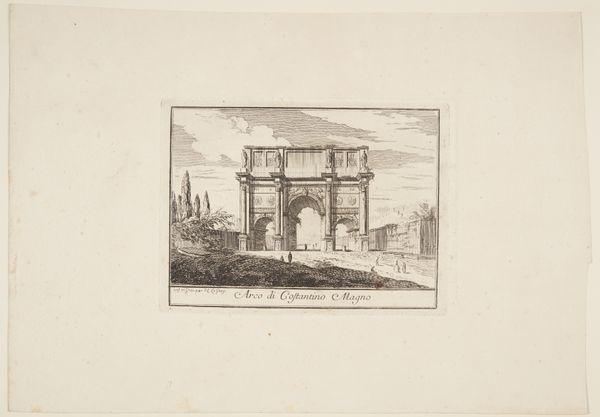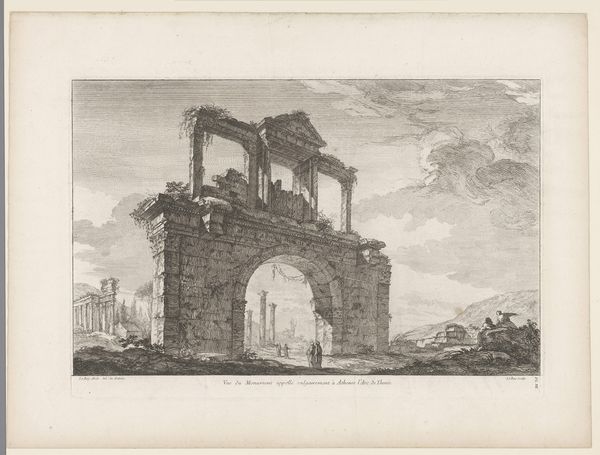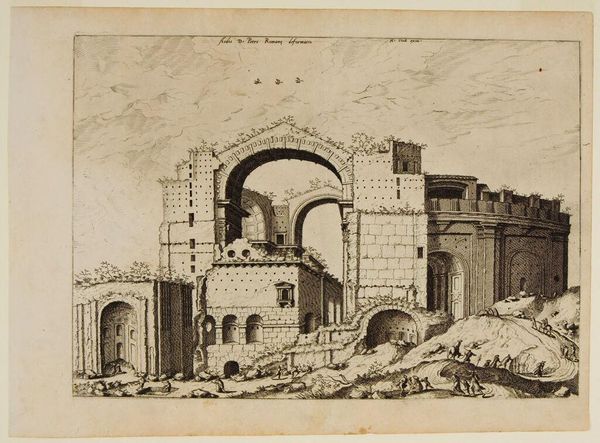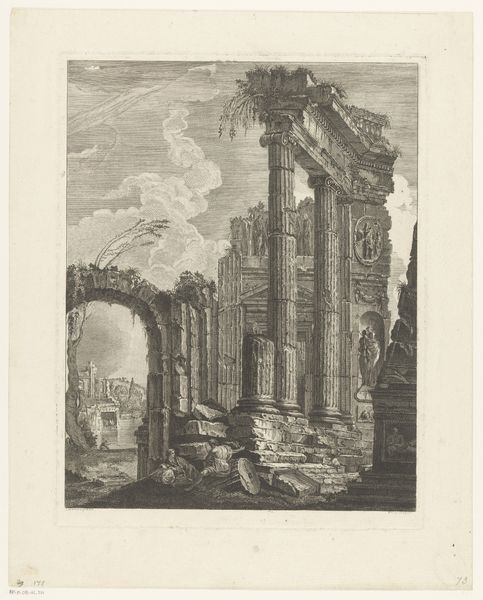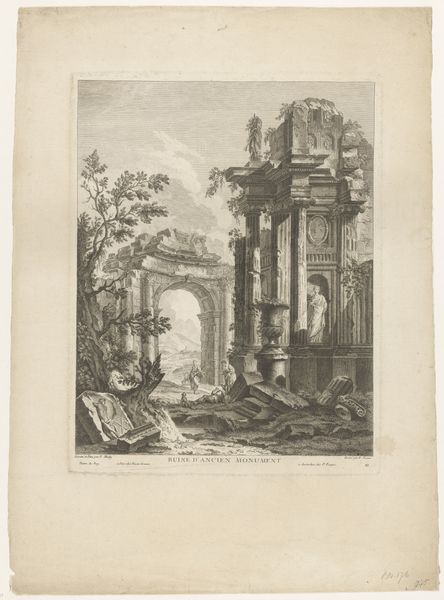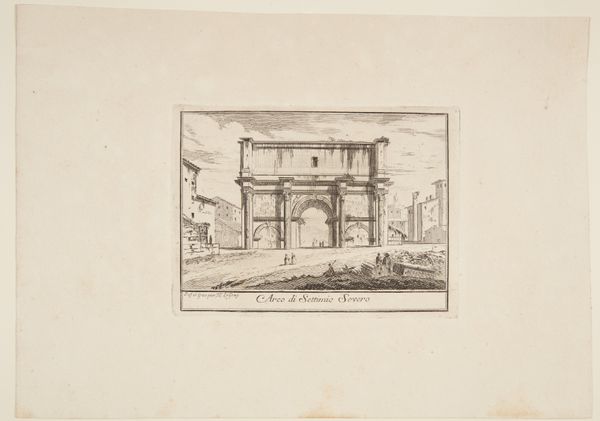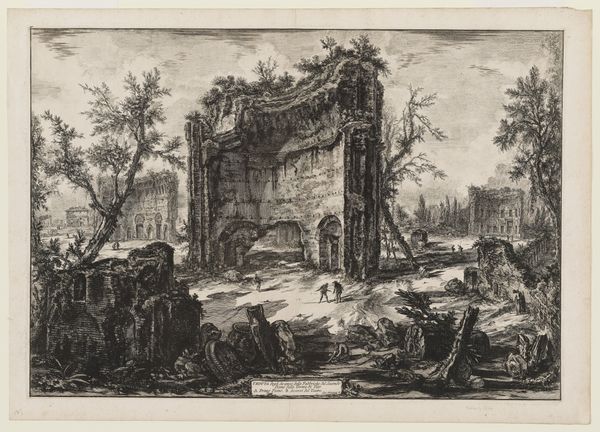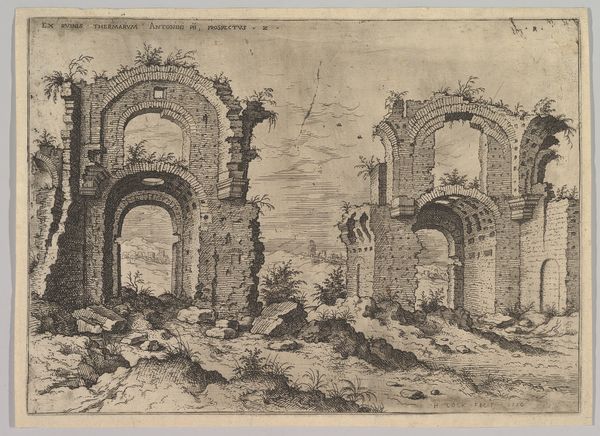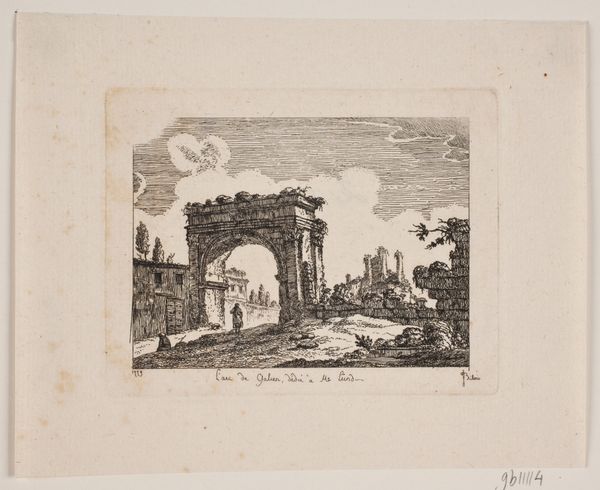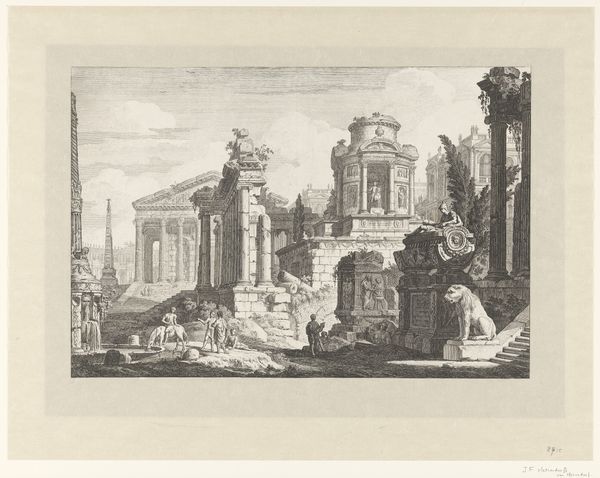
Arch of Gallienus. 1. Church of S. Vito 1741 - 1748
0:00
0:00
print, etching, engraving, architecture
#
baroque
# print
#
etching
#
etching
#
engraving
#
architecture
Dimensions: 111 mm (height) x 196 mm (width) (plademaal)
Editor: This etching by Giovanni Battista Piranesi, dating from the 1740s, is titled "Arch of Gallienus. 1. Church of S. Vito". The image appears aged, like a memory resurfaced. The scene is busy despite its ruined state, and figures roam about the arch as though it's just another part of the landscape. How might we understand Piranesi's focus on this ancient arch? Curator: Look closely. Beyond its immediate representation of Roman ruins, the arch acts as a symbol. Arches, historically, signified triumph, power, the emperor’s glory. Now, consider its state: dilapidated, overtaken by time, but still a focal point for daily life. Doesn’t this suggest something about the enduring yet altered nature of power and cultural memory? What do you think Piranesi, amidst the Baroque fervor, is saying about Rome’s past glory? Editor: So, the arch itself isn't just architecture, it’s a symbol of how past power fades but also continues to shape the present? Curator: Exactly! Notice how Piranesi situates this monument amidst the daily bustle. This etching visualizes the layering of time; the Roman Empire isn't merely gone—its remnants are integral to the present. Do you see how the ordinary people circulating around the grand architecture contribute to the commentary? Editor: That makes sense. The arch isn't just an isolated relic. It’s woven into the fabric of everyday life, and maybe that's why Piranesi included all those ordinary people going about their day around the arch. Curator: Precisely. Piranesi urges us to recognize the psychological and emotional impact that historical monuments have on cultural identity and its continued, evolving interpretation across generations. This symbolism allows a very contemporary viewpoint from an artist deeply fascinated by Rome’s place in collective consciousness. Editor: I never considered ruins could speak so vividly about the present. Curator: Piranesi was a master of imbuing images with meaning. By examining symbols, we unlock entire worlds of historical and psychological resonance.
Comments
No comments
Be the first to comment and join the conversation on the ultimate creative platform.
